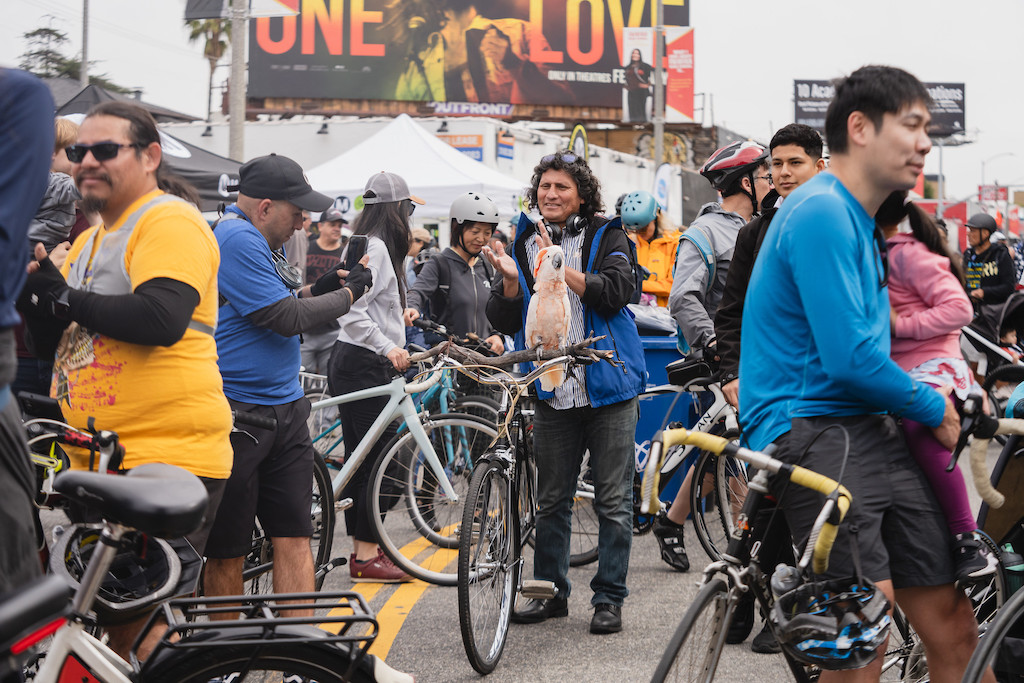Autumn Gear Guide
Find inspiration in our Gear Guide that will keep you out on your bike through wind or rain.
Download NowCicLAvia, Los Angeles’ long-running open streets initiative, has announced its 2025 schedule, featuring eight car-free events across the city. Now in its 15th year, the program continues to offer Angelenos and visitors a chance to walk, bike, and roll through neighborhoods without the presence of cars. The 2025 lineup includes a mix of returning routes […]
CicLAvia, Los Angeles’ long-running open streets initiative, has announced its 2025 schedule, featuring eight car-free events across the city. Now in its 15th year, the program continues to offer Angelenos and visitors a chance to walk, bike, and roll through neighborhoods without the presence of cars.
The 2025 lineup includes a mix of returning routes and new additions, beginning with the inaugural CicLAvia—West Adams Meets University Park on Feb. 23. Other events will bring car-free streets to Koreatown, Hollywood, Historic South LA, Watts, and Venice, among others. In addition to the traditional CicLAvia routes, which range from four to seven miles, there will be two smaller-scale CicLAmini events in Pico Union and San Pedro. These shorter routes are designed to create a more pedestrian-oriented experience, featuring activities like self-guided tours, street games, and local business engagement.
“For 15 years, LADOT’s partnership with CicLAvia has unlocked the potential of our streets and turned them into neighborhood celebrations,” says LADOT General Manager Laura Rubio-Cornejo. “We look forward to hitting the streets from West Adams to University Park with another great event that allows Angelenos and visitors to walk, bike, and roll through vibrant communities, meet up with friends, and support local businesses.”
CicLAvia began in 2010, inspired by Bogotá’s weekly Ciclovía events, which temporarily transform streets into open public spaces. Since then, more than two million participants have explored Los Angeles on foot, bike, skateboard, and other forms of non-motorized transportation. Metro has continued its support of the program, providing funding alongside the City of Los Angeles and local partners. Organizers emphasize that the event is about more than just recreation, aiming to encourage sustainable transportation, highlight local businesses, and provide a space for communities to connect.

CicLAvia Melrose
Each event is free and open to all ages and abilities, with amenities such as water stations, bike repair, and rest areas along the routes. While CicLAvia is known for attracting cyclists, it welcomes all forms of people-powered movement, from walking and running to roller-skating and scootering. Certain e-bikes with pedal assist are permitted, while other motorized devices like e-scooters and hoverboards are not.
Supporters of CicLAvia see the initiative as an opportunity to reimagine urban spaces, demonstrating how streets can function beyond their conventional role for cars. By temporarily closing major thoroughfares, these events provide a glimpse into a city designed with pedestrians and cyclists in mind. Over the years, CicLAvia has also played a role in boosting Metro ridership, increasing awareness of alternative transportation, and fostering a sense of community among residents.
The 2025 season will run from February through December, with each event offering a unique way to experience different parts of Los Angeles. As the city continues to grapple with issues related to traffic congestion, air quality, and public space, initiatives like CicLAvia present an alternative vision—one in which streets are not just for cars, but for people.
Find inspiration in our Gear Guide that will keep you out on your bike through wind or rain.
Download Now
Leave a comment